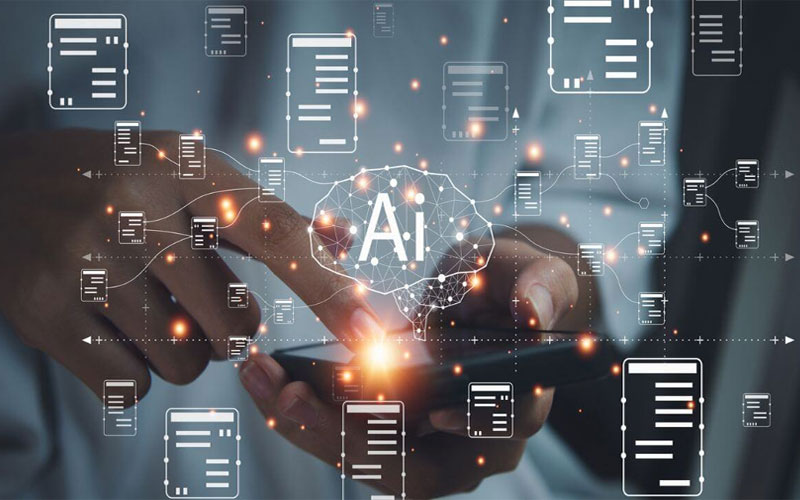In the realm of natural language processing (NLP) and artificial intelligence (AI), retrieval-augmented generation (RAG) has emerged as a powerful paradigm for enhancing the capabilities of language models. RAG combines the strengths of both retrieval-based and generation-based approaches to produce more accurate and contextually relevant responses in various NLP tasks such as question answering, dialogue systems, and summarization. In this article, we delve into the techniques and trends driving the optimization of retrieval-augmented generation.
Understanding Retrieval-Augmented Generation

Retrieval-augmented generation operates on the principle of leveraging external knowledge sources to enrich the generation process. Traditional generative models, such as GPT (Generative Pre-trained Transformer) variants, generate text solely based on the input they receive, often resulting in outputs lacking coherence or failing to incorporate relevant context. On the other hand, retrieval-based models excel at accessing and utilizing external knowledge but may struggle with creative text generation.
By combining these two approaches, retrieval-augmented generation aims to address the limitations of both methods. It typically involves a two-step process:
- Retrieval: The model retrieves relevant information from a large knowledge base or corpus of data. This retrieval can be based on various factors, including keywords, semantic similarity, or specific criteria defined by the task at hand.
- Generation: The retrieved information is then used to guide text generation by informing the model about relevant context, facts, or ideas. This ensures that the generated text is coherent, contextually appropriate, and aligned with the retrieved information.
Techniques for Optimization
Several optimization techniques have been developed to enhance the performance and efficiency of retrieval-augmented generation models. These techniques address various challenges such as efficient retrieval of relevant information, integration of retrieved knowledge into the generation process, and maintaining coherence and fluency in generated responses. Some key optimization techniques include:
- Efficient Retrieval Methods: Efficient algorithms for retrieving relevant passages or documents from large knowledge bases are essential for reducing latency and improving scalability. Techniques such as sparse retrieval, dense retrieval, and hybrid approaches combining both methods have been explored to achieve faster and more accurate retrieval.
- Semantic Matching: Semantic matching techniques aim to measure the similarity between the retrieved passages and the input query or context. This helps in selecting the most relevant information for generation while filtering out irrelevant or redundant content.
- Knowledge Integration: Strategies for effectively integrating retrieved knowledge into the generation process are crucial for maintaining coherence and relevance in generated responses. Techniques such as knowledge distillation, attention mechanisms, and multi-stage generation have been proposed to incorporate retrieved information into the language model’s output seamlessly.
- Fine-Tuning and Adaptation: Fine-tuning retrieval-augmented generation models on task-specific data or domains can further enhance their performance and adaptability to different applications. Transfer learning techniques, domain adaptation, and reinforcement learning approaches have been employed to fine-tune models for specific tasks or domains.
- Evaluation Metrics: Developing robust evaluation metrics for assessing the performance of retrieval-augmented generation models is essential for measuring their effectiveness and guiding further optimization efforts. Metrics such as relevance, coherence, fluency, and diversity of generated responses are commonly used to evaluate RAG models.
Current Trends and Future Directions
The optimization of retrieval-augmented generation models is an active area of research with several promising trends and future directions:
- Large-scale Knowledge Bases: The development of large-scale, comprehensive knowledge bases and corpora is essential for improving the effectiveness of retrieval-augmented generation models. Integration with structured knowledge graphs and domain-specific datasets can enrich the knowledge available to these models.
- Multi-modal Integration: Incorporating multi-modal information such as images, videos, and audio into retrieval-augmented generation models can enhance their capability to generate rich and diverse responses across different modalities.
- Interactive and Adaptive Generation: Exploring interactive and adaptive generation techniques where users can provide feedback or corrections to generated responses can improve the relevance and accuracy of outputs over time.
- Ethical and Responsible AI: Ensuring the ethical and responsible use of retrieval-augmented generation models by addressing issues such as bias, fairness, and transparency is crucial for building trust and credibility in AI-powered applications.
- Real-world Applications: Deploying retrieval-augmented generation models in real-world applications such as customer support, virtual assistants, and content generation platforms can demonstrate their practical utility and impact on improving user experiences.
Conclusion
The optimization of retrieval-augmented generation models involves a multi-faceted approach that addresses challenges related to efficient retrieval, semantic matching, knowledge integration, fine-tuning, and evaluation. By leveraging advanced techniques and exploring emerging trends, researchers and practitioners can continue to enhance the capabilities of retrieval-augmented generation models and unlock their full potential in various NLP applications.











